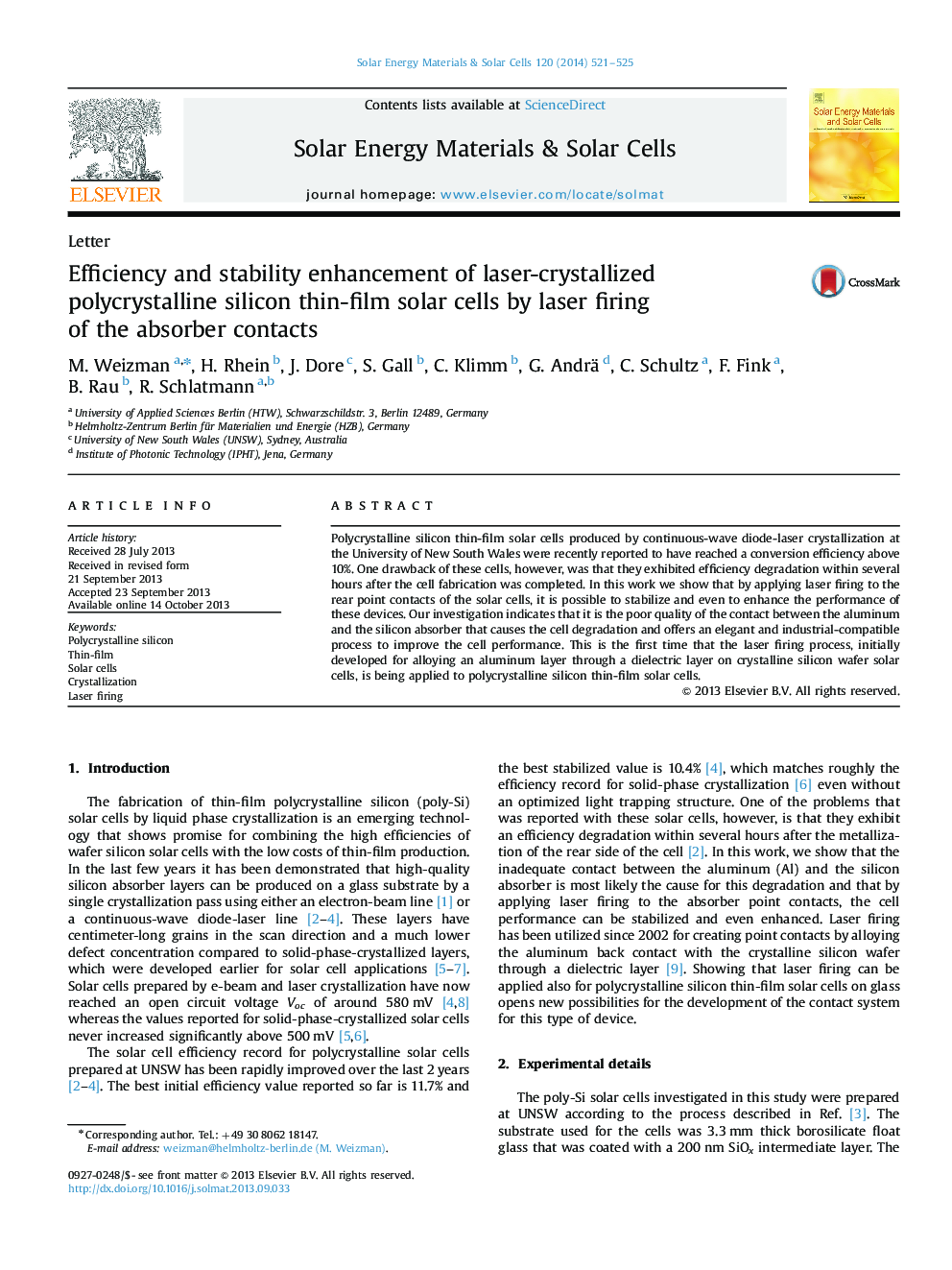| Article ID | Journal | Published Year | Pages | File Type |
|---|---|---|---|---|
| 78161 | Solar Energy Materials and Solar Cells | 2014 | 5 Pages |
Polycrystalline silicon thin-film solar cells produced by continuous-wave diode-laser crystallization at the University of New South Wales were recently reported to have reached a conversion efficiency above 10%. One drawback of these cells, however, was that they exhibited efficiency degradation within several hours after the cell fabrication was completed. In this work we show that by applying laser firing to the rear point contacts of the solar cells, it is possible to stabilize and even to enhance the performance of these devices. Our investigation indicates that it is the poor quality of the contact between the aluminum and the silicon absorber that causes the cell degradation and offers an elegant and industrial-compatible process to improve the cell performance. This is the first time that the laser firing process, initially developed for alloying an aluminum layer through a dielectric layer on crystalline silicon wafer solar cells, is being applied to polycrystalline silicon thin-film solar cells.
